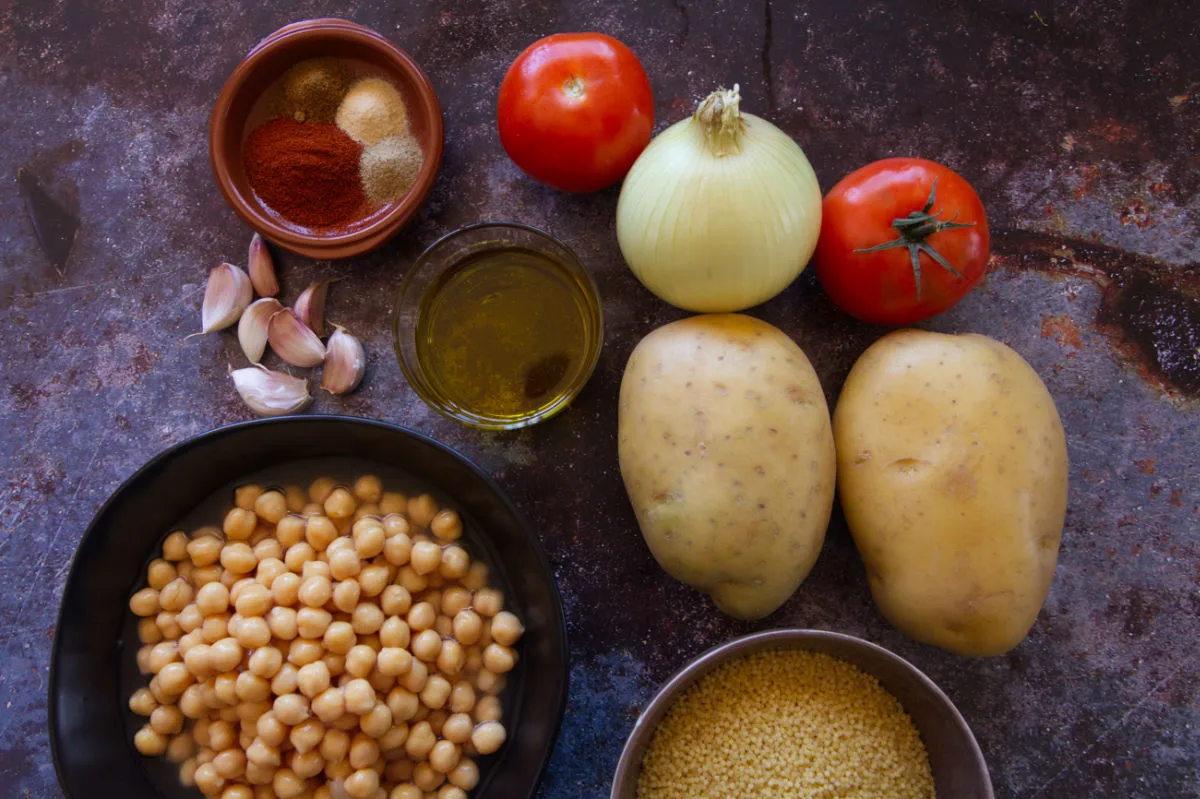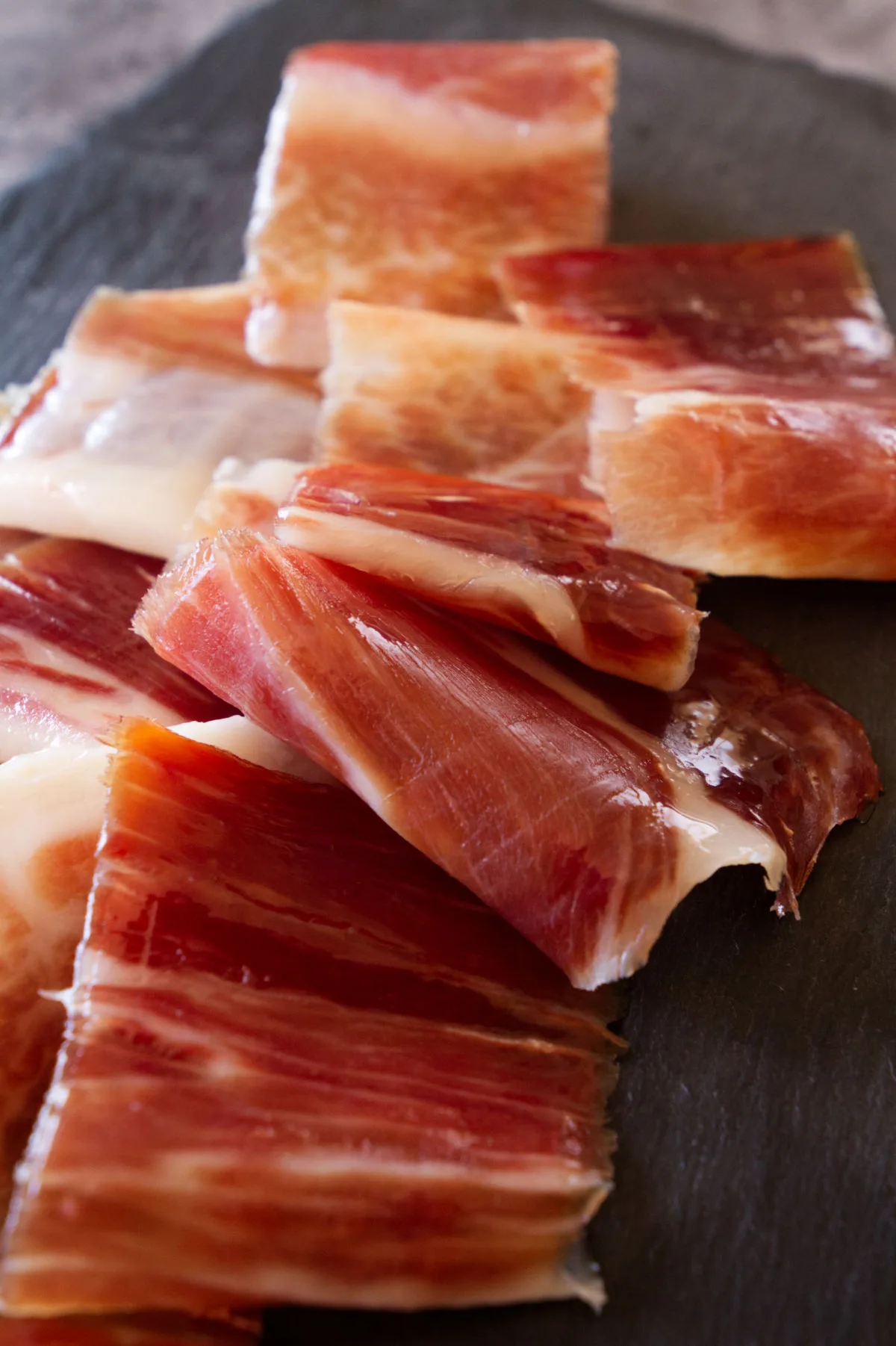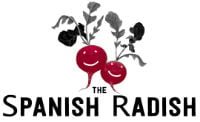What a Mediterranean Shopping List Looks Like (In Spain)

There are 22 countries on the Mediterranean Sea — they have many similarities and differences. Food and food culture has been shared between these countries over thousands of years and now you’ll find many versions of the same recipe across the different nations, particularly between neighboring states.
The famous Mediterranean Diet can be described as a combination of the best aspects of the region’s healthy eating habits and lifestyle. The focus is typically on plant-based foods, whole grains, healthy fats, and lean protein sources.
If you want to take a sneak peek into Spanish pantry staples and fresh produce that make our shopping list regularly, we’ve broken the items down by vegetables, fruit, grains and legumes, nuts and seeds, dairy, oils and fats, herbs and spices, fish and seafood, meats, beverages, and other, including some of the health benefits of each ingredient.
Vegetables
- Tomatoes: Rich in lycopene, which is linked to heart health and cancer prevention.
- Bell peppers: A source of vitamin C and antioxidants that support immune health.
- Zucchinis: Low in calories and a good source of dietary fiber.
- Eggplants: Contains nasunin, an antioxidant that helps protect brain health (try Mediterranean eggplant casserole with chickpeas and tomato).
- Onions: Contain quercetin, which has anti-inflammatory properties.
- Garlic: Has allicin, which is known for its antimicrobial properties (used in mojo sauce recipes).
- Broccoli: Contains sulforaphane, which has anti-cancer properties.
- Cauliflower: High in vitamin C and beneficial for digestion.
- Artichokes: Support liver function and are rich in dietary fiber. You can also buy artichoke hearts prepared in a tin.
- Cucumbers: Help keep you hydrated thanks to their high water content (try cold cucumber soup).
- Spinach: High in iron, calcium, and magnesium for strong bones and muscles.
- Arugula: Contains compounds that can support liver health.
- Kale: Loaded with vitamins A, K, and C and supports eye health.
Fruit
- Lemons: Vitamin C-rich and support digestive health.
- Oranges: Packed with immune-boosting vitamin C.
- Grapes: Contain resveratrol, which can benefit heart health.
- Figs: A source of fiber and calcium (try grilled figs with goat cheese).
- Dates: High in natural sugars for quick energy.
- Apples: Contain pectin, which supports gut health.
- Olives: Rich in monounsaturated fats that support heart health (marinated olives tapas).
- Pears: High in fiber, aiding in digestion.
- Berries: Rich in antioxidants that protect against cell damage.
- Melons: Help with hydration and are a good source of vitamins.
- Apricots: High in vitamin A, beneficial for skin and eye health.
- Plátanos: From Canary Islands and similar to bananas, they are rich in potassium.
- Kiwi: Packed with vitamin C and enzymes that aid digestion.

Grains and Legumes
- Bread: Particularly whole grain bread is high in fiber, supporting heart and gut health. We often buy sourdough baguettes which are popular here and a good source of antioxidants.
- Rice: Brown rice is a whole grain that helps stabilize blood sugar levels. White rice isn’t as nutritious but is often enriched with iron and B vitamins.
- Lentils: Rich in protein and iron, supports energy and muscle function (try Mediterranean lentil and spinach stew).
- Chickpeas: Source of protein and fiber, supporting heart health.
- Beans: Packed with protein and fiber, aiding in digestion and feeling satisfyingly full.
Nuts and Seeds
-
- Almonds: High in vitamin E and monounsaturated fats (the base of romesco sauce).
- Walnuts: Contain omega-3 fatty acids, which benefit brain health.
- Pine nuts: A source of vitamins and minerals, including zinc.
- Pistachios: Rich in antioxidants and beneficial for heart health.
- Sesame seeds: High in calcium and can support bone health.
- Chia seeds: Contain omega-3 fatty acids and support digestive health.
- Flaxseeds: High in omega-3s and lignans, which have antioxidant properties.

Dairy
- Natural yogurt: High in protein and probiotics, supporting gut health (try this healthy yogurt dressing).
- Eggs: A complete protein source and rich in choline for brain health (try huevos estrellados).
- Cheese: High in calcium, supporting bone health. (Learn about different types of Spanish cheese).
Oils and Fats
- Extra virgin olive oil: High in monounsaturated fats, supports heart health, and more (olive oil nutrition facts).
- Avocados: Source of healthy fats and potassium.
Herbs and Spices
- Parsley, Rosemary, Thyme, and Basil: These are the most common herbs used in Spanish cooking, and are not only flavor enhancers but are also packed with antioxidants.
- Paprika: Sweet, smoked, and spicy paprika are rich in antioxidants and certain vitamins and minerals.
- Cumin: One of the top seven spices used in Spain, it helps digestion and contains beneficial iron.
- Saffron: Contains antioxidants and may have mood-enhancing properties.
- Cayenne Pepper: Contains capsaicin which has antioxidant and anti-inflammatory properties.
- Cinnamon: Has anti-inflammatory properties and can help regulate blood sugar.
- Black pepper: Contains piperine, which enhances nutrient absorption.
- Sea salt: Provides essential minerals, but should be consumed in moderation.
Fish and Seafood
- Sardines: Packed with omega-3s and vitamin D.
- Mackerel: Omega-3-rich fish that supports heart health.
- Salmon: High in omega-3 fatty acids, beneficial for heart and brain health.
- Tuna: Another source of omega-3s, supports cardiovascular health.
- Shrimp: Low in fat, high in protein, and a source of selenium (try this garlic shrimp recipe).
- Mussels: Rich in iron, supporting oxygen transportation in the blood (feature in Spanish seafood stew).
Meats
- Chicken: Lean protein source that aids muscle growth (try this baked Mediterranean chicken thighs recipe).
- Ham: Spanish hams, especially Jamón Ibérico, contain some healthy fats including oleic acid, and are a good source of protein. But, they’re usually high in salt and calories so should be used sparingly.

Beverages
- Water: We’ve included this although we don’t actually buy water but just use a jug to filter tap water. But you’ll see many people in Spain buy large bottles of water and drinking plenty of water is an essential component of the Mediterranean diet. Natural sparkling water or water with gas is also popular here and a healthy choice.
- Herbal teas: Various health benefits depending on the herbs, generally antioxidant-rich (top 50 herbal teas).
- Red wine: To be drunk in moderation, red wine contains resveratrol which is beneficial for heart health. If you don’t enjoy red wine, there’s no need to start now! Eat some red grapes instead.
Other
- Honey: Natural sweetener that has antioxidant and antimicrobial properties.
- Dark chocolate: Rich in antioxidants and may support cardiovascular health.
While these are the most common items we buy or use in cooking, we also buy other ingredients that should be used more sparingly, like Spanish chorizo (high in protein but also fat), sherry (great in many recipes), sugar for rich desserts like walnut tart with orange-infused salted caramel, and other items that are essential to a recipe but may not fall under the “Mediterranean Diet.”
The key is balance and moderation if you’re looking to have a healthy diet. The way foods are prepared and your overall lifestyle choices also play a role in your health.
We hope you’ve found some new items to make their way onto your shopping list wherever you are. Happy cooking!


0 Comments